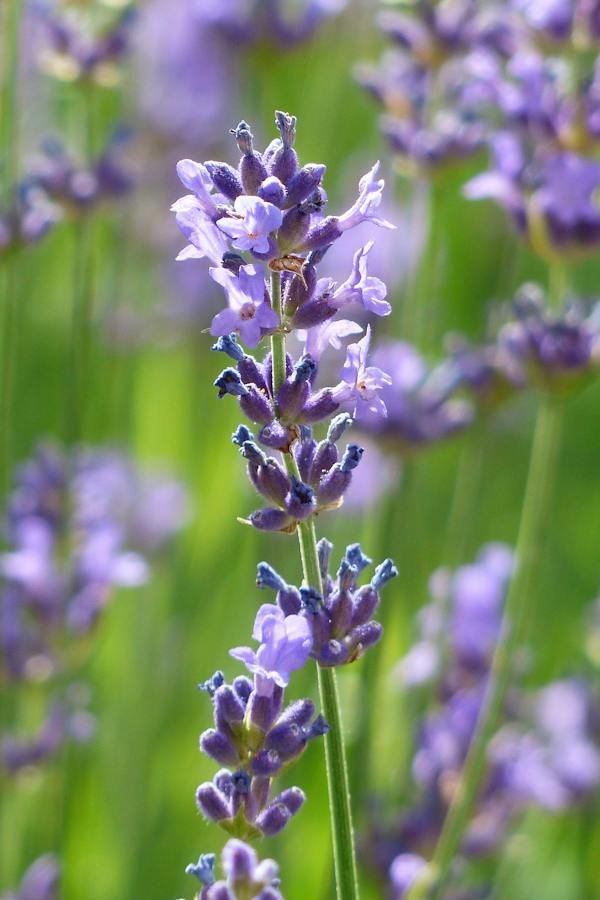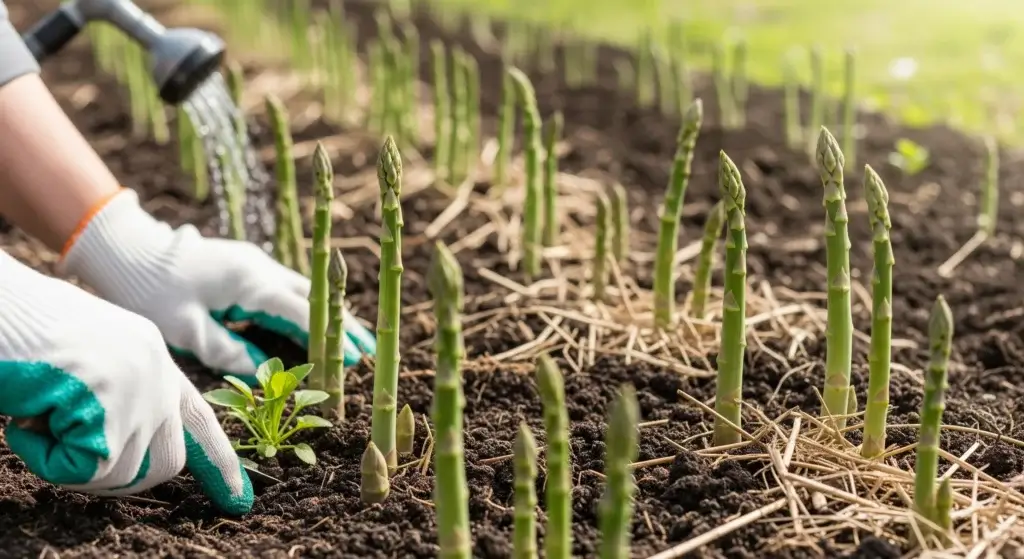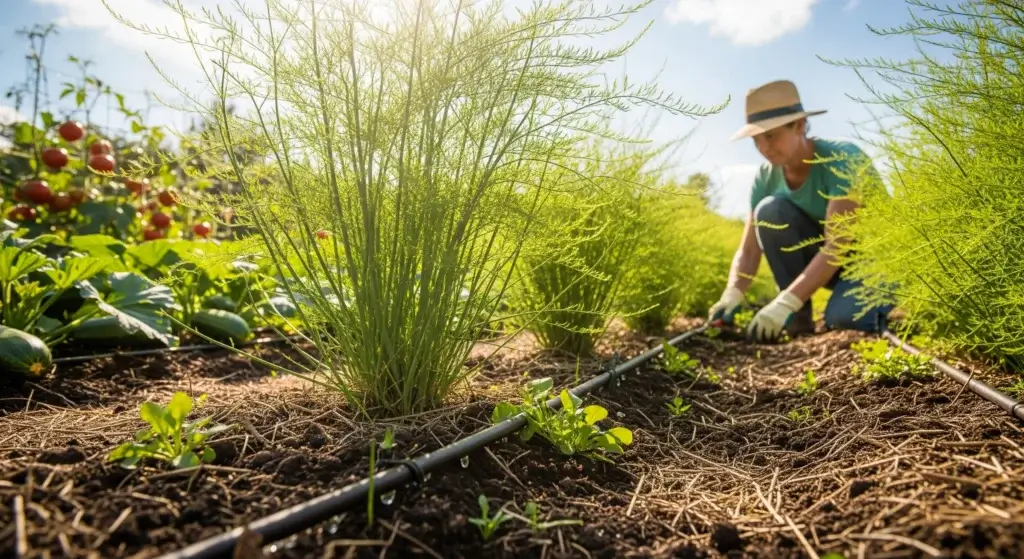
Lavender plants stand out as a preferred choice among gardeners and homeowners, cherished for their delightful blooms and resilient characteristics.
However, ensuring the health and longevity of these plants hinges on the correct approach to watering.
In this guide, we’ll delve into essential practices for watering lavender, covering key aspects such as the right timing, appropriate quantities, and strategies to steer clear of both overwatering and underwatering.
Let’s embark on a journey to cultivate vibrant and thriving lavender in your garden.
When Should I Water My Lavender Plants?
Knowing when to water your lavender plants is crucial for their well-being, considering their preference for dry soil.
Overwatering can lead to complications like root rot, emphasizing the need to allow the soil to dry out between waterings.
Here’s a detailed breakdown of when and how to water your lavender plants:
- Read also: Hanging Spider Plant Care
- Read also: A Guide on How to Make Your Spider Plant Bushier
Newly planted lavender
During the initial summer after planting, it’s essential to provide consistent moisture to help the lavender establish its roots.
Water newly planted lavender once or twice a week.
This initial attention supports robust root development, setting the foundation for a healthy and thriving plant.
Established lavender plants
Once lavender plants are established, they exhibit resilience and require less frequent watering.
Generally, established lavender only needs water during prolonged periods of drought, such as when there’s been no rainfall for approximately two weeks.
During these dry spells, provide sufficient water to ensure the well-being of your lavender.
Potted lavender
For potted lavender, regular watering is necessary. However, exercise caution to avoid waterlogged conditions.
It’s crucial to ensure optimal drainage in the pot to prevent water from accumulating at the roots, which could lead to problems like root rot.
Strike a balance by keeping the soil consistently moist without veering into excessive moisture.
Observation and adaptation
Pay close attention to the soil moisture levels and the appearance of the lavender plants.
Adjust your watering routine based on environmental conditions and the specific needs of your lavender.
Consider factors such as temperature, humidity, and rainfall patterns in your region to tailor your watering practices accordingly.

How to Water My Lavender Plants
Now that you’ve established when to water your lavender plants, let’s delve into the best practices for ensuring optimal hydration.
Here are detailed tips to consider:
Pouring water over the soil
- Utilize a watering can or place the lavender plant directly under a tap.
- Ensure even distribution of water over the soil surface, allowing it to penetrate the roots effectively.
- This method provides a controlled and measured approach to watering, preventing water wastage and promoting efficient absorption.
Submerging the pot in water
- Fill a bucket or any suitable vessel with lukewarm water.
- Gently lower the entire pot, ensuring that the lavender plant’s soil is completely submerged.
- This technique allows for thorough saturation of the soil, reaching all parts of the root system.
- Submerging the pot is particularly beneficial for potted lavender, ensuring the roots receive adequate moisture.
Watering close to the ground
- Direct your watering close to the base of the plant, aiming to keep flowers and leaves as dry as possible.
- Minimize wetting the foliage, as lavender plants prefer drier conditions, and damp leaves can invite issues like fungal diseases.
- Watering near the ground also supports the roots’ ability to absorb moisture efficiently.
What are the Signs of Overwatering Lavender Plants?

Excessive watering poses a risk to lavender plants, causing complications such as root rot.
Recognizing signs of overwatering is crucial for maintaining the health of your lavender.
Look out for the following indicators:
- Yellowing leaves: Lavender plants may exhibit yellowing leaves when overwatered. This discoloration is a clear visual cue that the plant is experiencing stress due to excess moisture.
- Wilting or drooping stems: Overwatering can lead to wilting or drooping stems, as the roots struggle with the saturated soil. This is a physical manifestation of the plant’s inability to absorb the surplus water.
- Foul odor: An unpleasant odor may emanate from the soil of overwatered lavender plants. This scent is indicative of stagnant water in the root zone, fostering conditions conducive to root rot.
What are the Signs of Underwatering Lavender Plants?
Insufficient watering can adversely affect lavender plants, leading to issues such as stunted growth and suboptimal blooming.
Recognizing the signs of underwatering is essential for maintaining the vitality of your lavender.
Keep an eye out for the following indicators:
- Dry, brittle leaves: When lavender plants lack adequate water, their leaves become dry and brittle. This noticeable change in leaf texture is a clear indication that the plant is experiencing water stress.
- Wilting or drooping stems: Insufficient water can cause lavender stems to wilt or droop. This is a visible response to the plant’s attempt to conserve water and energy during periods of water scarcity.
- Slow growth or lack of blooms: Underwatered lavender may exhibit slow growth and a deficiency in blooming. The plant redirects its resources to essential functions, compromising its ability to produce vibrant blooms.
Consequences of Overwatering or Underwatering Lavender Plants

Maintaining the proper watering balance is crucial for the well-being and growth of lavender plants.
Both overwatering and underwatering can have detrimental effects on their health.
Consequences of overwatering
Overwatering presents a host of challenges for lavender plants.
One of the most severe issues is root rot, a condition where the roots succumb to fungal infections due to excess moisture.
This not only jeopardizes the plant’s overall health but can also attract pests.
Signs of overwatering include the yellowing of leaves, indicating stress, and the wilting or drooping of stems as the roots grapple with saturated soil.
A foul odor emanating from the soil is another unmistakable signal of overwatering.
Root rot, if left unaddressed, can ultimately lead to the demise of the lavender plant.
Consequences of underwatering
Conversely, underwatering can impede the growth and blooming potential of lavender plants.
Stunted growth and a lack of vibrant blooms are common outcomes when these plants do not receive sufficient water.
Dry and brittle leaves are a tangible indication of water deficiency.
When lavender plants are underwatered, they exhibit drooping, and the soil feels completely dried out to the touch.
- Read also: Mint Plant Watering for Explosive Growth
- Read also: The Ultimate Aloe Plant Watering Care Guide
Conclusion
Ensuring the proper watering of your lavender plants is essential for their well-being and lasting vibrancy.
This article provides guidelines to guarantee the flourishing and beautiful blooming of your lavender.
It’s crucial to allow the soil to dry between waterings and water near the ground, and steer clear of both overwatering and underwatering.
Follow these tips to maintain the health and longevity of your lavender plants.
FAQs
Newly planted lavender should be watered once or twice a week during its first summer. Established lavender plants only need watering during extended periods of drought, such as when there has been no rain for two weeks. Potted lavender should be watered regularly, but with caution, ensuring optimal pot drainage.
Signs of overwatering lavender plants include yellowing leaves, wilting or drooping stems, and a foul odor.
Signs of underwatering lavender plants include dry, brittle leaves, wilting or drooping stems, and slow growth or lack of blooms.



